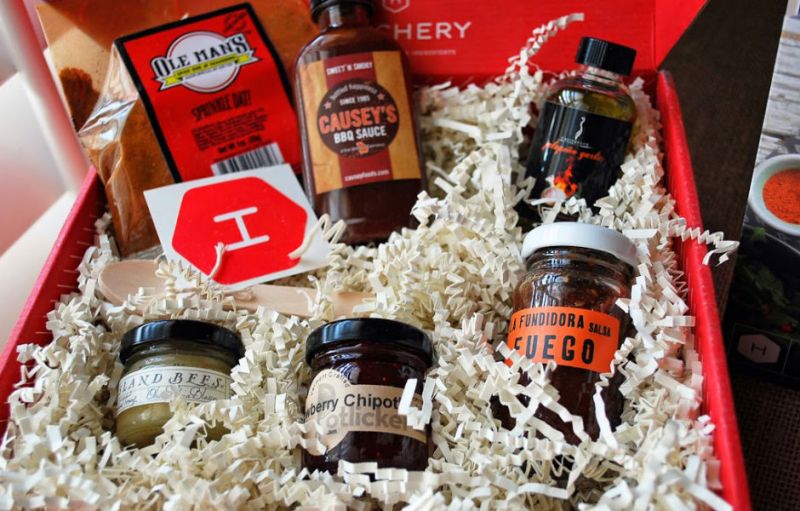
The premise is simple: each month, subscribers receive a curated box containing anything from Harissa from Whole Spice to Southern Art’s Korean BBQ sauce to Diane’s Sweet Heat Habanero Jam—products from around the country that take the hassle out of culinary discovery. Subscribers can also buy ingredients individually and check out recipes.
The Manual caught up with Friedman to ask him about Hatchery, how he finds his products, and why we should subscribe to it.
How did you come up with the idea for Hatchery?
I’ve always traveled a lot and every trip I went on I would discover so many great flavors along the way. But most of those products were only available in local areas and when I would come home I always thought to myself, “Wouldn’t it be great if I could get these products without my annual cross country road trip?” Fortunately, when I reached out to some of my favorite makers, I learned that they felt the same way. They had customers from across the country who would sometimes travel hundreds of miles just to purchase their products. The idea of connecting to their customers online made sense to them, but they didn’t have the means to do so.
Why do you think that there’s a need for a subscription service like this?
There are so many wonderful and unique local products across the United States but distribution is such a major roadblock for most small-batch food makers. Our monthly Tasting Box lets thousands of people across the country taste-test products they’d otherwise never experience on their own, and gives our makers access to a national audience they wouldn’t have otherwise. Plus, with our Marketplace, it’s easy to purchase full-size items of the products you tried and loved most.
Where do you look for your products?
We actually have a team that travels the country visiting green markets, family farms, and specialty stores in search of talented makers that want to share their story with others around the country. Our team taste-tests every single item to ensure it’s truly unique and delicious before sharing with our members.
What are some of your favorite discoveries?
This is a tough question for me to answer because my pantry is now filled with Hatchery products. But at the moment, I’m really hooked on this dark chocolate rosemary peanut butter from Brooklyn-based maker, Better Off Spread. When we sampled it in March people loved it, it went viral across Instagram and sold out overnight.
Who is Hatchery’s ideal customer?
Our ideal customer is the foodie who enjoys discovering new and exciting tastes and is passionate about supporting local small-batch makers.
What are you planning next?
We have exciting things [planned] for makers and for consumers.
Makers will be able to use Hatchery as a platform to analyze what samples are doing well and get strong feedback. We also are working on video series that showcases a behind-the-scenes look at each of our makers. I can’t share too much now but there are some very exciting things in the works [for consumers], including leveraging some of our awesome tastemakers.
For more information, visit hatchery.co.


